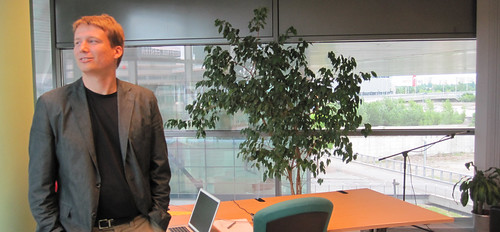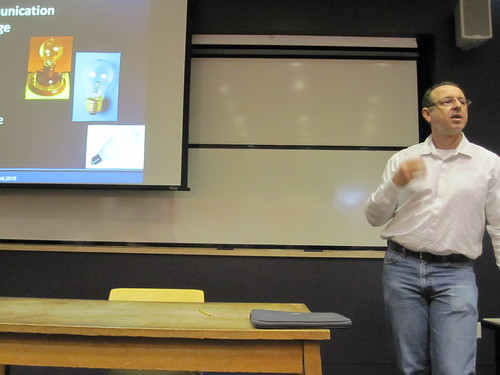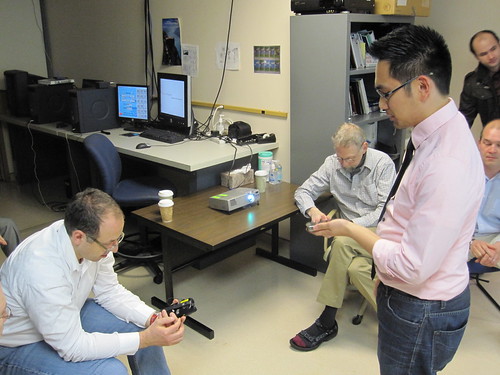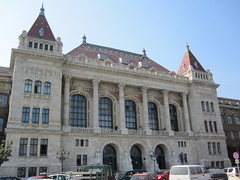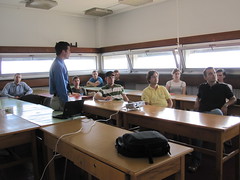 On June 7 and 8, 2010 I visited the Budapest University of Technology and Economics (BUTE) for the second time in ten months. As with my last visit I went to discuss the BUTE-CEPS exchange program.
On June 7 and 8, 2010 I visited the Budapest University of Technology and Economics (BUTE) for the second time in ten months. As with my last visit I went to discuss the BUTE-CEPS exchange program.
During this visit I met six people who have been involved in organizing different aspects of the exchange program. My host was Eszter Kiss, the Program Director of the Information Center for Engineering Programs in English (ICEPE). For UNH/CEPS students, staff and faculty, she is the Hungarian face of the exchange program. Eszter and I primarily talked about the fact that, starting in 2011, UNH ECE exchange students will spend the spring semester in Budapest. Other CEPS students will remain on the fall-in-Budapest schedule.
Eszter organized two meetings for me with BUTE leaders. The first one was with Dr. Peter Moson, Vice-Rector for International Relations (the Vice-Rector position at BUTE is equivalent to the Vice President position at a US university). Ildiko Varga, the head of the BUTE Erasmus and Exchange Office was also present at this meeting. Dr. Moson expressed his full support for a vibrant relationship between BUTE and CEPS. On a personal note it was great to see Dr. Moson who I met during his visit to UNH last year. It was also nice to talk to Ms. Varga who went to graduate school and taught mathematics at Purdue.
The second meeting organized by Eszter was with Dr. Gabor Stepan. Dr. Stepan, a member of the Hungarian Academy of Sciences (HAS), is the Dean of the BUTE Faculty of Mechanical Engineering, the ICEPE’s parent unit. Dr. Stepan expressed his full support for the BUTE-CEPS exchange program. Again on a personal note, it was exciting for me to visit the BUTE Faculty of ME where my father received his BS ME a long time ago. Dr. Stepan also spent some time telling me about BUTE’s history, including facts and anecdotes about BUTE’s Nobel-prize winning alumni.
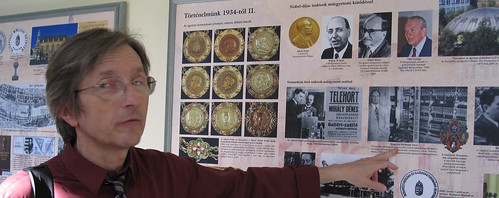
While the meetings with Drs Stepan and Moson and with Ms. Varga primarily dealt with the overall BUTE-CEPS relationship, I also had a chance to work on issues related to UNH ECE directly with the BUTE unit that hosts ECE students. Specifically, Dr. Moson introduced me to Dr. Balint Kiss, the person in charge of the English language education at the Faculty of Electrical Engineering and Informatics. This is the BUTE unit that hosts UNH ECE exchange students and Dr. Kiss will be my primary contact in determining courses for our students to take while at BUTE. The meeting with Dr. Kiss was also an opportunity to catch up with Dr. Peter Arato. Dr. Arato, who is also a HAS member, has strong ties to the UNH ECE department having collaborated extensively with UNH ECE professor Andrzej Rucinski.
In addition to all these productive meetings I had a chance to give a talk to BUTE students interested in the exchage program. Seven prospective students attended, several of them interested in coming to the UNH ECE department – I hope we’ll see them here soon.

I would like to thank Eszter Kiss for organizing my visit (on very short notice). I would also like to thank the BUTE faculty, staff and students who took time to meet with me. Finally, I would like to acknowledge the UNH ECE Department and the CEPS Dean’s office who jointly funded this visit.
For pictures about my trips to Budapest visit my Flickr page.

